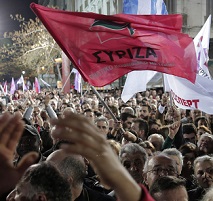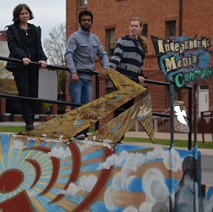
Trading Paradise for a Pipeline
Source: Truthout
I am the Lorax. I speak for the trees.
— Dr. Seuss
For a while now, I’ve been banging awake around five o’clock in the morning, but I languish for a time in that warm you’re-comfy-and-you-know-it zone of semi-sleep, until I eventually grab myself by the face and drag myself out of bed. Before I leave the room, I make sure to crack both of my ankles; the small hallway connecting us to my daughter’s bedroom has the acoustic qualities of a finely-crafted orchestra hall, and when those joints decide to thud out there in the pre-dawn gloom, it sounds like a damn car accident. My poor, stupid, oft-broken and oft-sprained ankles have woken my daughter up more times than I can count when they decide to pop on a pivot, so I always try and remember to kick out the jams before I use the door.


